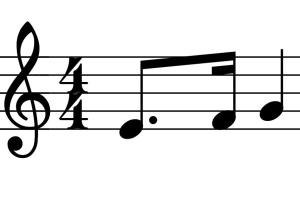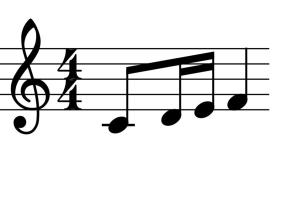Double dotted crotchets
What is a double dotted crotchet? It is an essential and very common rhytmic figure:
Today we will focus on this new essential musical element: we will learn double dotted crotchets in depth and practice through many music reading exercises.
As usual you will also find a video to learn to play double dotted crotchets.
To make the most of the material in this lesson, I suggest you to read the Introduction page of this cycle of lessons. (go to link).
Have a good lesson!
Learning material of this lesson
| 4 videos | 19 mins |
|---|---|
| 1. Introduction to the new lesson | 2m 12s |
| 2. Double dotted crotchet (theory and practice) | 12m 59s |
| 3. Music reading practice | 1m 59s |
| 4. Exercise to learn to play double dotted crotchets | 2m 24s |
| + 1 pdf file | |
| + 9 audio files |

The access to this lesson is reserved to Premium Membership subscribers.
If you are already registered you can simply log in.
Not a Premium Member yet?
Register today, or upgrade if you are already a free member, to access this and all the other lessons of the premium membership.
Free Access
With a Free account you gain immediate access to 15 lessons of piano, theory, harmony, music reading and composition (36 videos).








